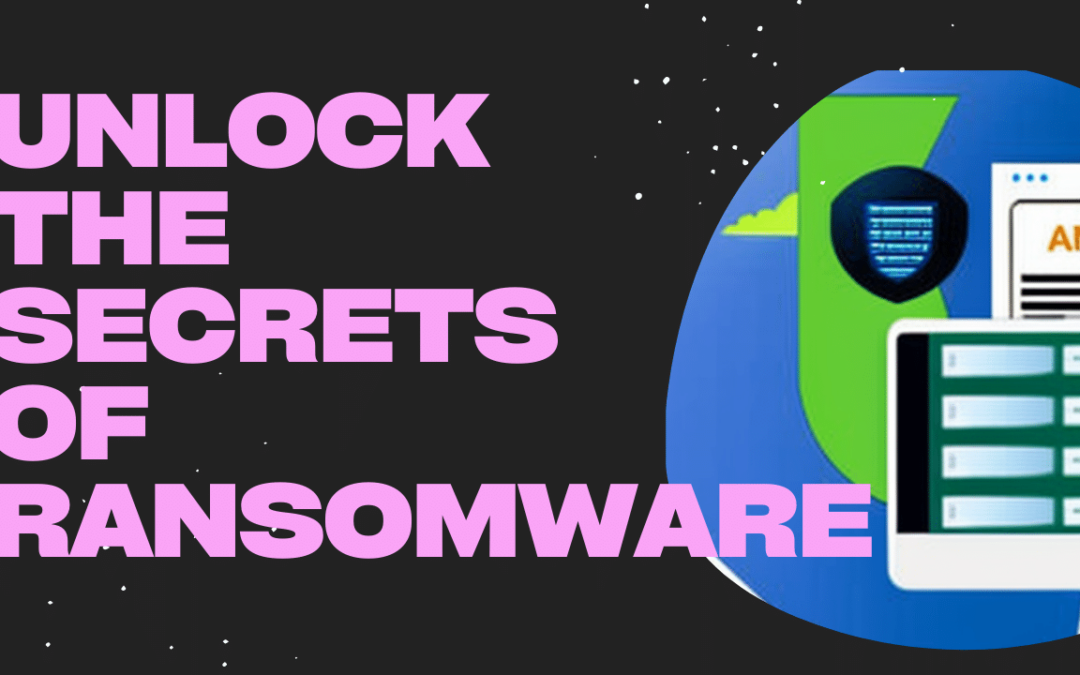Introduction
The term “ransomware” has become a dirty word in recent years. It has been used to describe all kinds of malware, from simple lockers (which prevent you from opening an important file until you pay a fee) to more sophisticated infections that encrypt files on your computer and demand money for the decryption key. The recent WannaCry and NotPetya attacks have again brought ransomware into the spotlight, making many people wonder what it is and how to protect themselves against it.
What is ransomware?
Ransomware is malicious software that blocks access to the computer system it infects and demands a ransom paid to the malware’s creator to regain access to the system. In some cases, this can be done through Bitcoin or another cryptocurrency; other ransomware may require you to pay by mailing cash, money order, or gift card codes directly to an international address.
Ransomware attacks are on the rise and getting more sophisticated every day! But don’t worry: we’ve got your back! Here’s everything you need to know about these cyber threats…
Why Ransomware is Here to Stay
Ransomware is a big business. And the bad guys are making millions from it. These criminals know you have no choice but to pay up, or they’ll destroy your data forever. And if that weren’t enough, there’s no limit to the damage they can do if you don’t pay them off–they can make your life miserable by locking down your files and then asking for $50,000 in bitcoin currency (which is nearly untraceable) to get them back again!
Ransomware has existed since at least 1989, when programmers started encrypting files on PCs with weak security settings, demanding payment before releasing them back into the wilds of cyberspace again. But over time, these attacks became more sophisticated until eventually, we reached today where we see mass infections taking place every day around the world with no end in sight unless something drastic happens soon enough, as we’ve seen recently with WannaCry being stopped only after Microsoft released patches for unsupported operating systems like XP SP3 (and even then only partially).
How does it get into your computer and lock down your files?
If you’re wondering how ransomware gets into your computer, it can be through various methods, the two most common of which are:
- Ransomware can be delivered through phishing emails, websites, or other malware. These are all ways that hackers use to trick you into installing malicious software on your machine.
- Some types of ransomware can install themselves automatically when you open an email attachment or download an infected file from the web (called “drive-by” infection). The malware will then do its thing without asking for permission first!
Will having Local backup files – saved on your computer – protect your data from being lost in a ransomware attack
While local backup files can be used to recover your data, they are not a substitute for cloud backup. While it is true that ransomware attacks are less likely to affect your computer than they are on your smartphone or tablet, they can still happen (and have happened). In addition, local backups do not offer the same level of protection as cloud backups because they are vulnerable to ransomware attacks just like any other file stored on your computer.
Ransomware attacks are becoming increasingly common, which means more and more people will need help recovering their data after an attack. While we recommend using both types of backups–local and cloud–it’s crucial to understand how each works, so you know what kind of protection each provides before choosing which one(s) best suits your needs!
What is a double ransom
Double ransom is a term used to describe the situation when a ransomware infection encrypts your data and then demands a second payment to decrypt it. This type of ransomware is more familiar with crypto-ransomware but can happen with any malware.
Double Ransomware Example: CryptoLocker
The most famous example of double ransom was CryptoLocker in 2013, which still works today! CryptoLocker started as an email attachment containing malicious code that would install itself on your computer once opened, locking all files on the machine until you paid up (around $300). Of course, if you didn’t pay within 48 hours of receiving this message from CryptoLocker’s creators, they’d delete all those encrypted files forever!
Ransomware can be dangerous, but there are ways to prevent and protect yourself:
- Implement multi-factor authentication for all users accessing sensitive systems and data.
- Implement a comprehensive backup and disaster recovery plan. 3-2-1-1-0 backup is the best.
- Establish and enforce policies for users using robust passwords and other authentication methods.
- Monitor user activity to detect suspicious activity.
- Train users on cyber security best practices and how to identify phishing emails.
- Install and maintain anti-virus and anti-malware software.
- Keep your computer and software updated with the latest security patches
- Implement a policy prohibiting users from downloading applications or files from untrusted sources.
- Monitor network activity for suspicious connections and traffic.
- Invest in a comprehensive email security solution.
- Please back up your data regularly and store it on an external hard drive
- Be careful about clicking on email links, and do not open suspicious files
- Avoid downloading files from untrusted websites
- Disable macro scripts from Microsoft Office files
- Use a firewall to block incoming connections from the internet
- Don’t click links or open attachments in emails from unknown senders – even if it looks like it’s from someone you know! Malware creators may have hacked them, so don’t be fooled into thinking that just because someone sent you a link or attachment means it won’t harm your device! Always check with the sender before opening anything suspicious they’ve sent via email.
- Also, avoid websites that offer free downloads of software updates – these sites could be hosting malicious code that will infect your computer when downloaded onto it (and then spread further).
Conclusion
In conclusion, ransomware is a growing threat that can affect anyone. To protect yourself from ransomware attacks, make sure you keep your software up-to-date and use strong passwords. If you think you’ve been infected by ransomware or malware, contact https://ic3.gov immediately so we can help!


